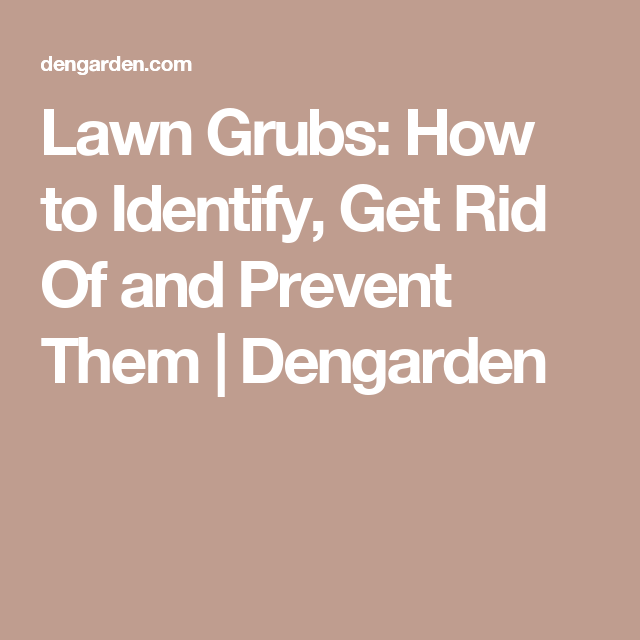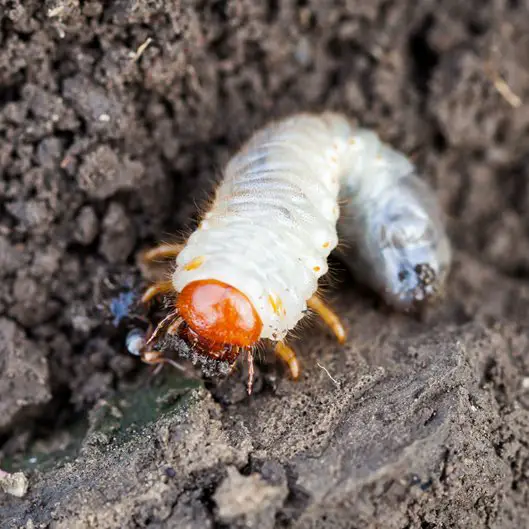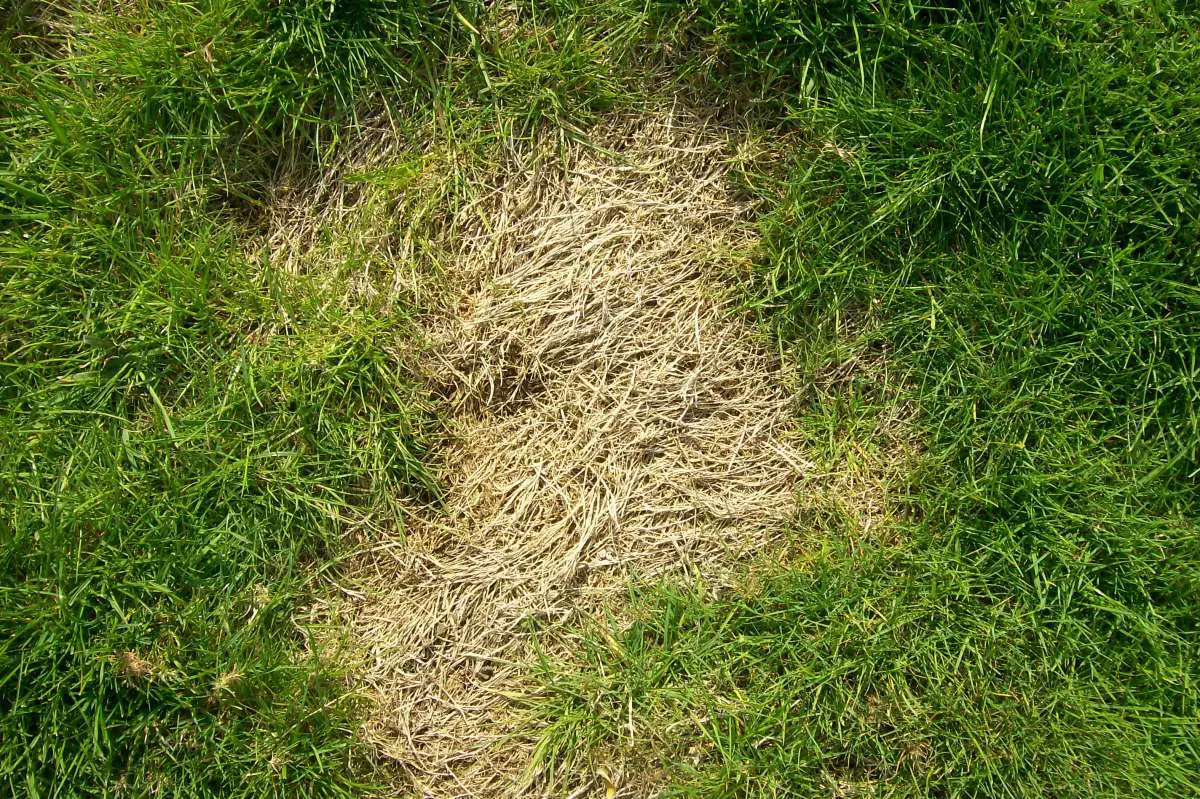How To Get Rid Of Grubs Naturally
If you decide to treat your garden beds or lawn for grubs, it is best to introduce the treatment to the soil in mid- to late-summer or early fall. During this time, the grubs will be newly hatched and will be near the surface and beginning to feed. During the winter, they burrow deeper into the soil, and during the spring they are in the pupal stage, and then move into the imago stage, which means most treatments will be far less effective.
Many beetles return to the same area to lay eggs each year so, if you have a large population, it may take a few years to get it under control through treatment.
It is often best to try natural treatments before moving up to pesticides that may introduce toxins into the groundwater or affect the health of your family, your pets, bees, or other local wildlife. So, lets look at some home remedies for grubs and natural ways to get rid of grubs.
How To Kill Grubs In Your Lawn
During the late summer and early fall, you may begin to notice lawns turning an unattractive shade of brown in certain unsightly, dying patches. The likely explanation is the grass is being destroyed by hungry, thriving grub worms living below the surface of the lawn. If this has happened in your lawn, there is good news. These pests can be controlled, and your lawn can be restored back to its healthy state by getting rid of grub worms.
Better yet, because of a growing preference for natural gardening solutions, there are now some easy and natural ways to kill lawn grubs and stop them from reappearing next year. This means youll be able to get back to enjoying your yard year-round without concern of nasty grubs eating away at it.
Treatments For Cranberry Girdler
After the bug has been eating at the lawn, insect control will get rid of the webworm once the webworm touches the application. If the lawn goes through the fall and winter untreated, the grass will be dead in the winter and unable to grow back in the spring.
Stewarts has special lawn chemicals to treat for grubs that eat grass. Call 801-226-2261 if you think your lawn has cranberry girdler.
Watch our video for more information about insects that eat the roots of lawns.
Don’t Miss: Can You Plant Grass Seed Over Existing Lawn
Apply Beneficial Nematodes To The Soil
What are nematodes? Nematodes are microscopic roundworms that move within the soil, in search of a suitable host to enter. Once they penetrate and enter the host , they release a specialized bacteria that kills the grub so that they can feed on it, and reproduce! Once they eat through that grub, the nematodes venture out on the hunt for more. The added benefit over milky spore or Bt is that the grub doesnât need to physically eat the nematodes. The nematodes seek out the grubs!
In addition to killing grubs, there are a number of added benefits to having a healthy population of nematodes in your garden soil too. For instance, they help augment the soil food web and improve soil fertility. Beneficial bacteria and fungal mycorrhizae play an important role in soil and plant health, but are immobile! However, they can hitch a ride on nematodes and disperse among the soil to do their good work. Some nematodes feed on bacteria and fungi too, which break down and release stored nutrients back in to the soil.
How To Get Rid Of Grub Worms Naturally

Well let me helping you use Detergent salt, Vinegar Garlic with neem all are superb in the result and why because of having strong defender formula against Grubs worms.
Kills grubs permanently, do you search before what soap occurs or detergent, even salt yes all are helpful. sodium chloride in salt kills your lawn soil enemies excellent which is best for your grass growth.
To Get Rid of Grub Worms Naturally must look at my 8 items collection but if you really hurry up then the solution Mentioned in the first line for you.
Stops Today Read and Kill all G.rubs in Lawns. Not Exist Again if you follow this Guide.
Ride Below To Take Advantages. No More Fungus.
Read Also: What Does Trugreen Use On Your Lawn
Nematodes For Lawn Grub Control
Beneficial nematodes can be introduced into the affected lawns to control Grubs. These nematodes work efficiently.
The nematodes munch on the larval forms thus they also prevent future infestation to an extent. Ive tried this method of control and I can say it works.
You can buy such nematodes on amazon.
How To Spot Grubs
Do you find yourself struggling with rodents? Skunks, raccoons, moles and birds love grubs. If you’ve noticed animals digging up your lawn, grubs may be to blame.
Hard-shelled beetles infest the ground with their larvae, known as grubs. The most common types of beetles are Japanese beetles and June bugs. Their larvae are ugly, often white or yellow. Some say they look like cooked macaroni. They are C-shaped, have soft bodies, and legs near the head.
Most of the time, these larvae are what animals are looking for in your lawn. Grubs also eat the roots of garden plants and lawn grasses. Late June is when grub eggs are laid, so pay extra attention at summer’s start.
If you have brown grass patches, look for pencil-thin holes on the soil surface. Or lift the sod to see if any are just beneath the surface. Look for them at night, on top of the soil. More than 10 grubs per square foot is a bad sign.
Luckily, it’s a double whammy. If you control the grubs, you control the animals digging up your lawn. It’s a win-win situation to save your lawn.
You May Like: When Should Lawns Be Aerated
How To Get Rid Of Grubs
Grubs are a serious pest and can kill your lawn. Ravenous from day one, they live to do nothing but eat. They eat the roots and the stems off your lawn grasses. This kills your grass until it turns into ugly brown patches. Unless you control the grubs now, theyll infest your entire lawn by summers end. Unattended grubs turn into beetles that destroy your plants and flowers.
Smart homeowners use proactive methods to prevent and protect against grubs. This guide details how to spot grubs and how to de-grub your lawn.
What Is The Best Time Of Year To Treat Soil With Beneficial Nematodes
Treat your garden soil with beneficial nematodes whenever the curl grubs are visible and present! And, when the temperature conditions are ideal as described above. Spring and/or fall are generally a good time to treat in most locations. Curl grubs are most active in warm weather. Some sources recommend a spring application, as the grubs will be vigorously feeding closer to the surface on new plant roots in the spring. Yet others suggest treating in the late summer to fall, to kill the grubs when theyâre still small and the benefits will carry over to next spring.
I am not an expert on all the species of curl grub beetles, but I suspect that there are slight differences in each of their life cycles that would make spring versus fall more effective. Not to mention all of our varying climates. Therefore, if you are struggling with a severe infestation of grubs in your garden soil , it may be best to treat twice per year.
Recommended Reading: How To Green Up Lawn
What Is The Best Time To Treat For Grubs
Treating in late summer or early fall is ideal, as that is when the smaller, young grubs are most susceptible to nematodes. There is also usually a short window for application in early spring before the grubs get too big and pupate, but that is a narrower window and can be difficult to time properly.
How To Prevent Grubs
There are several things you can do to prevent these insects from becoming a pest.
You May Like: What Is The Best Lawn Insecticide
Did You Find This Article Useful
Please tell us why?
MSU is an affirmative-action, equal-opportunity employer, committed to achieving excellence through a diverse workforce and inclusive culture that encourages all people to reach their full potential.
Michigan State University Extension programs and materials are open to all without regard to race, color, national origin, gender, gender identity, religion, age, height, weight, disability, political beliefs, sexual orientation, marital status, family status or veteran status. Issued in furtherance of MSU Extension work, acts of May 8 and June 30, 1914, in cooperation with the U.S. Department of Agriculture. Quentin Tyler, Director, MSU Extension, East Lansing, MI 48824. This information is for educational purposes only. Reference to commercial products or trade names does not imply endorsement by MSU Extension or bias against those not mentioned.
The 4-H Name and Emblem have special protections from Congress, protected by code 18 USC 707.
When To Control Grubs

Controls are most effective on immature grubs. For most species and locations that means July or August is the prime time to treat with an insecticide. However, because grub populations vary from year to year, you may be able to save the cost of treatment if you first sample your lawn to estimate how many grubs are present. Dig up several pieces of sod about a foot square. If you find five or fewer grubs per square foot, you need not apply grub control. The lawn will withstand the amount of feeding these few grubs do. If 10 or more grubs are present, treat your lawn. If the average count is between five and 10, whether or not to control depends on the health of your lawn, your tolerance for damage to the lawn, and the presence of natural controls.
Don’t Miss: When To Dethatch Lawn In Virginia
How To Tell If You Have Lawn Grubs
The first sign of lawn grubs is often irregular brown patches in your lawn. These could be caused by many different factors, but if you can pull up the grass easily, its a clear indicatorthe grubs will have chewed through the roots, making it easy to separate from the soil.
Increased animal activity is another sign. Grubs make up a large part of the diets of skunks, raccoons, and birds. If you notice a lot more holes in your lawn from digging or pecking, these critters might be after abundant grubs.
Life Cycle Of A White Grub
To treat grubs it is important to first understand their lifecycle. Think of grubs as having 4 distinct stages during the year.
Spring Stage- In spring the grub is hungry and goes to the root zone of your lawn to feed on its roots. This is a quick feeding that lasts a couple of weeks so lawn damage done during this time is usually not too severe. After a couple weeks this grub turns into a beetle and flies out of the ground which brings us to the next stage.
Early Summer Stage- The grub is now a beetle and spends the summer months feeding on foliage of plants and vegetables. This is where you can see damage to plants in your landscape. At this stage the mature female beetles return to your lawn every couple of days to lay eggs. After laying a batch of eggs they leave your lawn and continue to feed. This cycle repeats until all their eggs have been laid . The adult beetles eventually die off in the fall.
Mid- Late Summer Stage During this stage the eggs begin hatching and grubs start to feed. This is the best time to apply curative grub treatments since the grubs are small and easier to kill.
Late Summer-Fall The grubs are hungry at this point and they grow fast! They go to the root system of your lawn and feed on the roots for the next couple of months. They are trying to get big and fat so they can overwinter deep in your lawns soil.
Don’t Miss: How Do I Keep My Lawn Green
Are White Grubs Useful Or Bothersome
- White grubs are a source of food for many animals and birds: skunks, groundhogs, moles, raccoons, blackbirds, starlings, etc.
- The larvae damage lawns by eating grass roots.
- Turf eaten by grubs is often assaulted by birds and small mammals looking for the larvae.
- If more than half of your lawn has been affected, you may need to replace all of the turf, which can be very expensive.
Will Soapy Water Kill Army Worms
Pick off the armyworm from the plant by hand and then drop it into a bucket of soapy waterliquid dish soap is perfectly fine. The soapy water solution will ensure the armyworms die. If you don’t plan on treating with an insecticide, remove the affected plants and wash gardening tools to account for any leftover eggs.
Don’t Miss: What Is The Best Cordless Self Propelled Lawn Mower
Utah Lawn Grubs: How To Identify & Get Rid Of Them
Does your lawn look brown in spotseven though it gets the correct amount of water? Lawn grubs can cause uneven, splotchy yellow areas in your grass with green grass blades intermixed throughout. Three common Utah lawn grubs will be explained in this post: billbugs, white grubs, and cranberry girdler.
Types Of Grub Treatment Products To Consider
Always read the instructions and follow them carefully when using any type of lawn treatment. There are difference applications with different ingredients recommended for killing lawn grubs and/or preventing them.
Curative Products: Curative products will kill existing grubs on contact.
Preventative Products: Preventative products will kill grubs that are present at the time as well as those that may hatch throughout the season.
- Dylox fast acting and most effective in the fall.
- Merit and Mach-2 used early in the season as a helpful prevention.
- Milky Spore effective and environmentally safe. Used on active grubs and as a prevention.
- Neem Oil a botanical pesticide that repels against beetles and lawn grubs.
- Nematodes a soil-dwelling worm that releases bacteria into the soil which in turn, infects and kills lawn grubs.
Don’t Miss: Does Home Depot Rent Riding Lawn Mowers
Do I Need To Treat For Grubs
If you have a very high concentration of grubs 10 or more grubs per square foot treatment may be necessary to maintain healthy grass. However, if you have a lower count of grubs, yet arent seeing good results in your lawn, thats a clue that you should revisit your lawn care practices more broadly.
Some of the best practices we recommend are:
- Testing your soil every 2-3 years, and following the fertilizer and amendment recommendations.
- Keeping grass mowed high at least 2, and ideally 3 or more which means that your grass will have a deeper, healthier root system that can tolerate more sub-surface insect feeding.
Read Also: Spectracide Weed Stop For Lawns Reviews
What Is The Best Product To Get Rid Of Grubs

Carbaryl and trichlorfon are two compounds that are considered curative remedies for immediate grub control. They are transient chemicals that are lethal to all grub life stages. So, if large populations of grubs are discovered in the fall or the spring before early May, these two pesticides are the way to go!
Also Check: How To Ask Someone To Mow Their Lawn
Ways To Get Rid Of Grubs
Nearly all lawns have a few grubs, but they rarely cause trouble unless their population soars.
The best way to determine if you have a grub problem is to remove a square foot of sod, about 3 inches deep, from the center of a brown patch. Sift through it and look for milky white C-shaped larvae. The buggers can vary in length, from ½ inch to 1 inch, depending on the species of beetle they will eventually become.
If you find five or more grubs in the sod you removed, its time to formulate a treatment plan. Weve put together the best ways, both natural and chemical, to rid your yard of greedy grubs.
Encourage Birds To Hang Out In Your Yard
Birds love to dine on grubs, so if you do not mind birds digging around in your flowerbeds or lawn, invite more of them to hang out in your yard. You can attract birds with bird feeders, bird baths and bird houses. To learn more about attracting birds to your yard, read Learn the Secrets of Attracting Birds to Your Backyard.
If you dig up grubs, you can also scatter them on top of the ground to encourage birds to eat them. Just know that any that are not snatched up by hungry birds will burrow back into the soil.
You May Like: Where To Dispose Of Lawn Mower